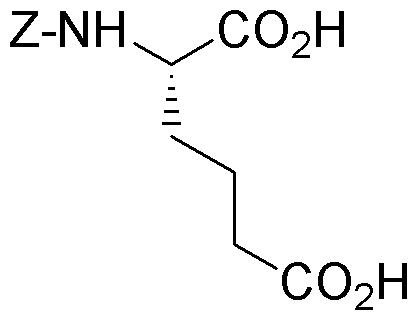Z-L-a-aminoadipic acid is widely utilized in research focused on:
- Peptide Synthesis: This compound serves as a key building block in the synthesis of peptides, particularly in the development of pharmaceuticals and biologically active compounds.
- Biochemical Research: It is used in studies involving metabolic pathways, helping researchers understand amino acid metabolism and its implications in various diseases.
- Drug Development: The compound plays a role in the formulation of novel drug candidates, especially in the area of neuropharmacology, where it may influence neurotransmitter systems.
- Food Industry: Z-L-a-aminoadipic acid can be explored as a food additive or flavor enhancer, contributing to taste profiles in various food products.
- Cosmetic Formulations: Its properties may be beneficial in skincare products, where it can act as a moisturizing agent or a stabilizer in formulations.
General Information
Properties
Safety and Regulations
Applications
Z-L-a-aminoadipic acid is widely utilized in research focused on:
- Peptide Synthesis: This compound serves as a key building block in the synthesis of peptides, particularly in the development of pharmaceuticals and biologically active compounds.
- Biochemical Research: It is used in studies involving metabolic pathways, helping researchers understand amino acid metabolism and its implications in various diseases.
- Drug Development: The compound plays a role in the formulation of novel drug candidates, especially in the area of neuropharmacology, where it may influence neurotransmitter systems.
- Food Industry: Z-L-a-aminoadipic acid can be explored as a food additive or flavor enhancer, contributing to taste profiles in various food products.
- Cosmetic Formulations: Its properties may be beneficial in skincare products, where it can act as a moisturizing agent or a stabilizer in formulations.
Documents
Safety Data Sheets (SDS)
The SDS provides comprehensive safety information on handling, storage, and disposal of the product.
Product Specification (PS)
The PS provides a comprehensive breakdown of the product’s properties, including chemical composition, physical state, purity, and storage requirements. It also details acceptable quality ranges and the product's intended applications.
Certificates of Analysis (COA)
Search for Certificates of Analysis (COA) by entering the products Lot Number. Lot and Batch Numbers can be found on a product’s label following the words ‘Lot’ or ‘Batch’.
*Catalog Number
*Lot Number
Certificates Of Origin (COO)
This COO confirms the country where the product was manufactured, and also details the materials and components used in it and whether it is derived from natural, synthetic, or other specific sources. This certificate may be required for customs, trade, and regulatory compliance.
*Catalog Number
*Lot Number
Safety Data Sheets (SDS)
The SDS provides comprehensive safety information on handling, storage, and disposal of the product.
DownloadProduct Specification (PS)
The PS provides a comprehensive breakdown of the product’s properties, including chemical composition, physical state, purity, and storage requirements. It also details acceptable quality ranges and the product's intended applications.
DownloadCertificates of Analysis (COA)
Search for Certificates of Analysis (COA) by entering the products Lot Number. Lot and Batch Numbers can be found on a product’s label following the words ‘Lot’ or ‘Batch’.
*Catalog Number
*Lot Number
Certificates Of Origin (COO)
This COO confirms the country where the product was manufactured, and also details the materials and components used in it and whether it is derived from natural, synthetic, or other specific sources. This certificate may be required for customs, trade, and regulatory compliance.


